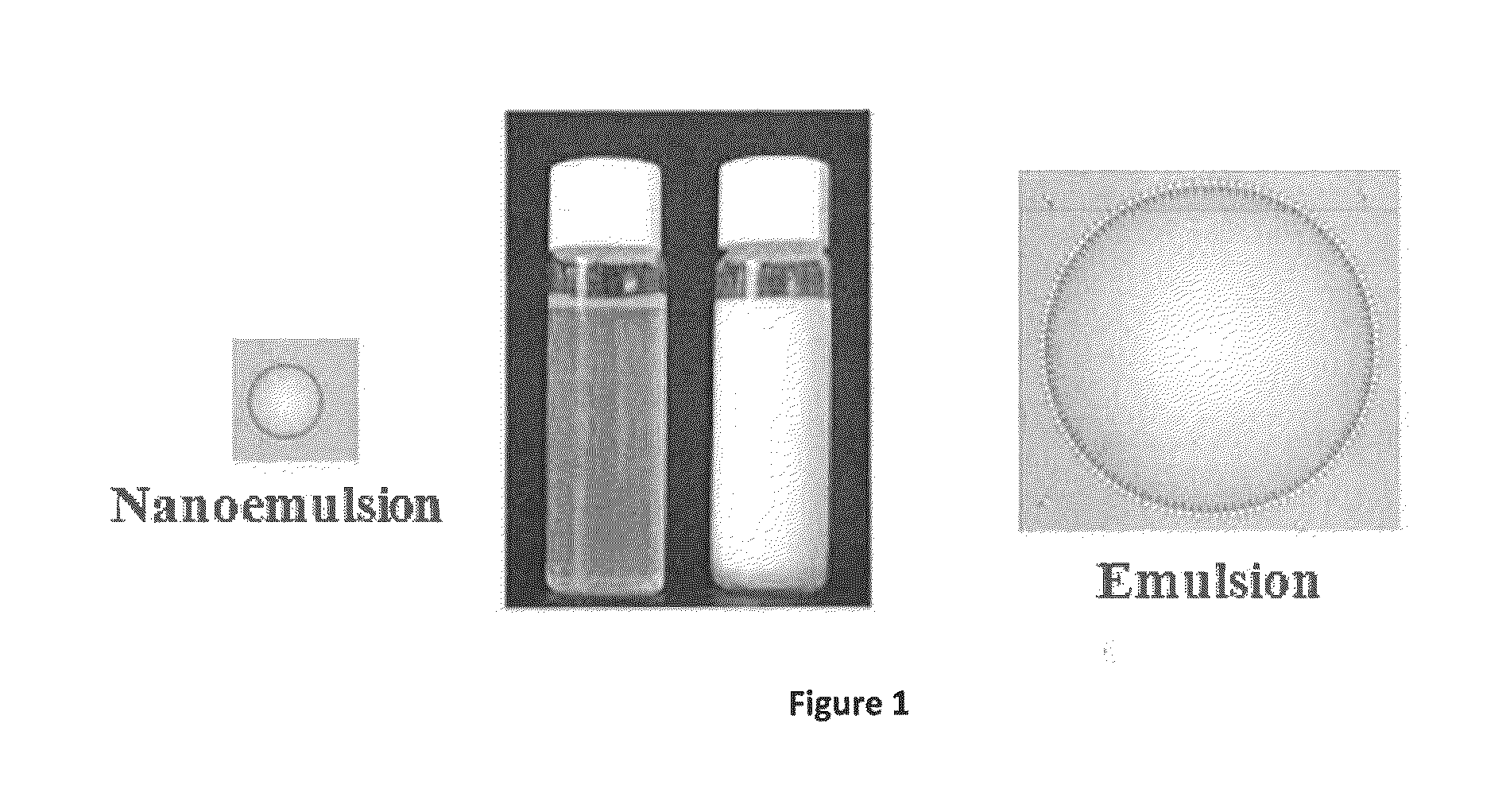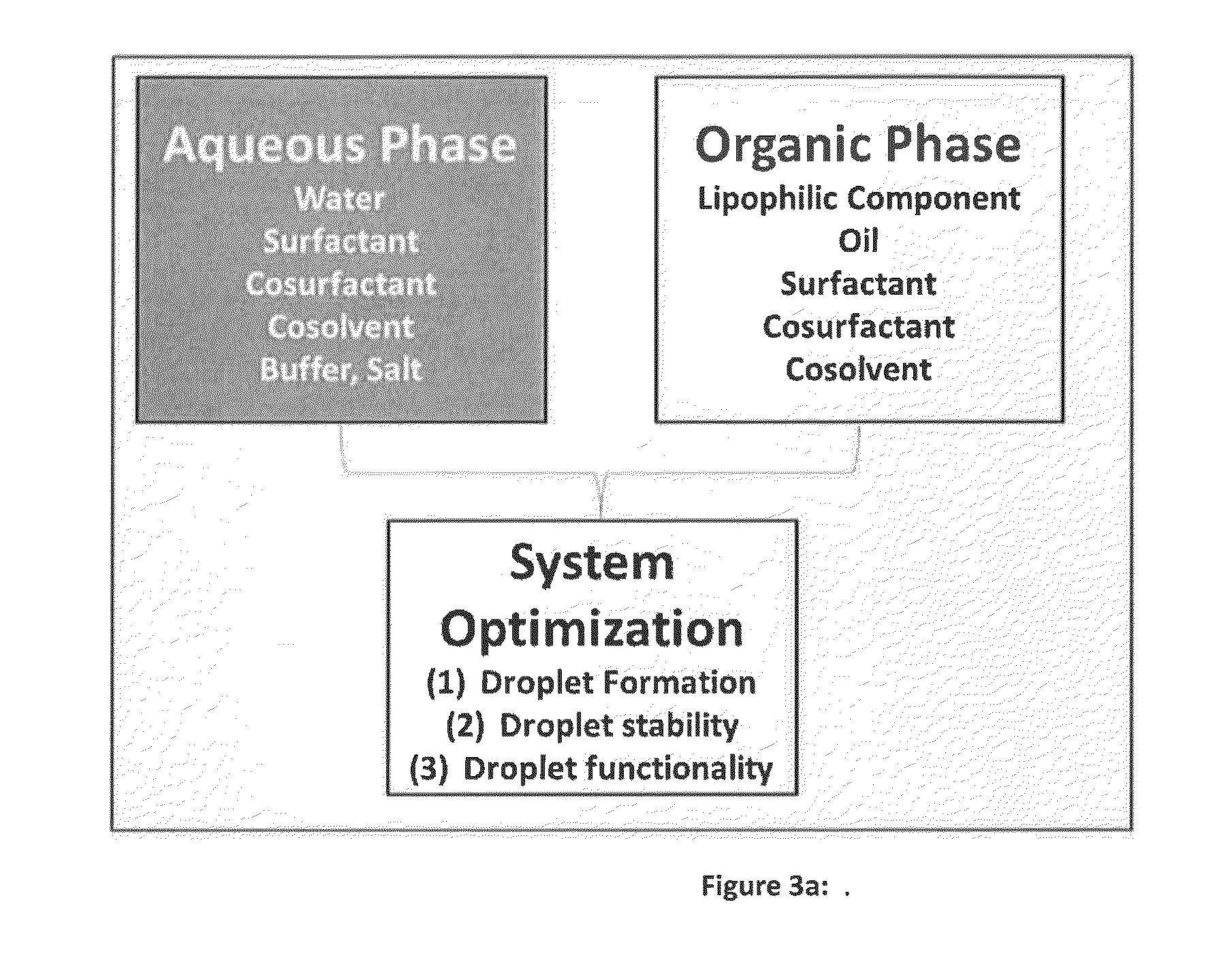Methods for producing optimal stable nanoemulsions and formulations obtained therefrom
a nanoemulsion and stable technology, applied in the field of substantially optimal stable nanoemulsions and to formulations obtained therefrom, can solve the problems of limited utilization of essential oils, large amount of surfactant to formulate, and large amount of -tocopherol as a functional ingredient in food and beverages, etc., and achieve the effect of suitable utilization
- Summary
- Abstract
- Description
- Claims
- Application Information
AI Technical Summary
Benefits of technology
Problems solved by technology
Method used
Image
Examples
Embodiment Construction
[0038]The following detailed description presents the currently contemplated modes of carrying out the invention. The description is not to be taken in a limiting sense, but is made merely for the purpose of illustrating the general principles of the invention, since the scope of the invention is best defined by the appended claims.
[0039]As used herein, the singular forms “a,”“an,” and “the” include the plural reference unless the context clearly dictates otherwise.
[0040]Except where otherwise indicated, all numbers expressing quantities of ingredients, reaction conditions, and so forth used in the specification and claims are to be understood as being modified in all instances by the term “about.”
[0041]“Substantially optimizing,” as used herein, refers to determining a range of input parameters around an optimum value for each of a number of required criteria and selecting a common range of the input parameters over which the number of required criteria are close to or equal to opt...
PUM
| Property | Measurement | Unit |
|---|---|---|
| radii | aaaaa | aaaaa |
| mean droplet radius | aaaaa | aaaaa |
| temperature | aaaaa | aaaaa |
Abstract
Description
Claims
Application Information
 Login to View More
Login to View More - R&D
- Intellectual Property
- Life Sciences
- Materials
- Tech Scout
- Unparalleled Data Quality
- Higher Quality Content
- 60% Fewer Hallucinations
Browse by: Latest US Patents, China's latest patents, Technical Efficacy Thesaurus, Application Domain, Technology Topic, Popular Technical Reports.
© 2025 PatSnap. All rights reserved.Legal|Privacy policy|Modern Slavery Act Transparency Statement|Sitemap|About US| Contact US: help@patsnap.com



